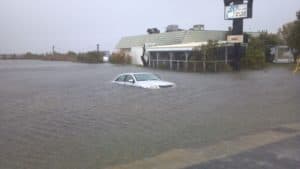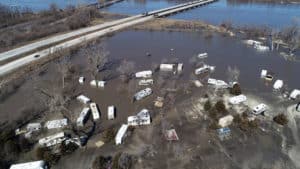
The head of an Aedes aegypti female mosquito.
Credit: Alex Wild
Female mosquitoes are known to rely on an array of sensory information to find people to bite, picking up on carbon dioxide, body odor, heat, moisture, and visual cues. Now researchers reporting in the journal Current Biology on March 28 have discovered how mosquitoes pick up on acidic volatiles found in human sweat.
The key is an olfactory coreceptor known as Ir8a. Mosquitoes lacking a functional version of the Ir8a gene were much less attracted to people, the researchers found. The findings potentially suggest new approaches for designing new and improved mosquito repellents.
“Removing the function of Ir8a removes approximately 50 percent of host-seeking activity,” says senior author Matthew DeGennaro, a mosquito neurobiology researcher at Florida International University in Miami. “Odors that mask the IR8a pathway could be found that could enhance the efficacy of current repellents like DEET or picaridin. In this way, our discovery may help make people disappear as potential hosts for mosquitoes.”
On the flip side, the Ir8a pathway also could […]

Accomack flooding
Accomack residents weighed in recently about the impact sea level rise is having on their lives.
The Eastern Shore of Virginia lies in one of the nation’s most vulnerable coastal regions, where scientists say sea levels are rising at three to four times the global average and storms are intensifying.
Some 33 miles of roads, mostly in northern Accomack, could be permanently flooded sometime between 2025 and 2050 with one foot of sea level rise — and 25 percent of all roads could be impassable as soon as 2090, according to a 2015 study.
Seven communities could be inaccessible by road as soon as 2025, according to the report by the Accomack-Northampton Planning District Commission.
That vulnerability makes the Shore a good place for scientists to study ways nature-based solutions can help communities be resilient in the face of climate change.
“We have one of the most studied coastal systems in the world,” said Jill Bieri, director of The Nature Conservancy’s Virginia Coast Reserve.
Monday’s discussion in the seaside town of Wachapreague, sponsored by The Nature Conservancy, was an […]

Richard Smith, former chairman and CEO of Equifax Inc., testifies before House Energy and Commerce hearing on “Oversight of the Equifax Data Breach: Answers for Consumers” on Capitol Hill in Washington, October 3, 2017.
Credit: Kevin Lamarque | Reuters
On Sept. 7, 2017, the world heard an alarming announcement from credit ratings giant Equifax: In a brazen cyberattack, somebody had stolen sensitive personal information from more than 140 million people, nearly half the population of the U.S.
It was the consumer data security scandal of the decade. The information included Social Security numbers, driver’s license numbers, information from credit disputes and other personal details. CEO Richard Smith stepped down under fire. Lawmakers changed credit freeze laws and instilled new regulatory oversight of credit ratings agencies.
 The Affordable Care Act was already in peril after a federal judge in Texas invalidated the entire law late last year. But the stakes ramped up again this week, when President Trump’s Justice Department announced it had changed its position and agreed with the judge that the entire law, not just three pieces of it, should be scrapped.
The Affordable Care Act was already in peril after a federal judge in Texas invalidated the entire law late last year. But the stakes ramped up again this week, when President Trump’s Justice Department announced it had changed its position and agreed with the judge that the entire law, not just three pieces of it, should be scrapped.
A coalition of states is appealing the ruling. If it is upheld, tens of millions more people would be affected than those who already rely on the nine-year-old law for health insurance. Also known as Obamacare, the law touches the lives of most Americans, from nursing mothers to people eating at chain restaurants.
[Like the Science Times page on Facebook. | Sign up for the Science Times newsletter.]
Here are some potential consequences, based on estimates by various groups.
21 MILLION Credit: DroneBase/AP Most of Nebraska is a disaster area with 95 percent of the state’s population affected by flooding. According to FEMA, total economic losses are approaching $1 billion, including more than $400 million to agriculture and more than $400 million to public infrastructure. Cascading levee failures along the Missouri River have meant that, for the time being, there’s essentially nothing holding back the floodwaters. Six Nebraska public drinking water systems went offline, and dozens of wastewater treatment facilities failed — including one for Omaha which officials say could take weeks or months to restore. In several cases, raw sewage is being discharged into streams and rivers. For rural residents who get their water from private wells, that added pollution could prove dangerous. Emergency room visits for gastrointestinal issues increase after heavy rains. As climate change makes rainstorms more intense, this problem will only worsen. Across the Great Plains, the frequency of heavy downpours has increased by 29 percent over the past 60 years. Flooding isn’t just a quickly damaging natural disaster that destroys roads, bridges, […]











